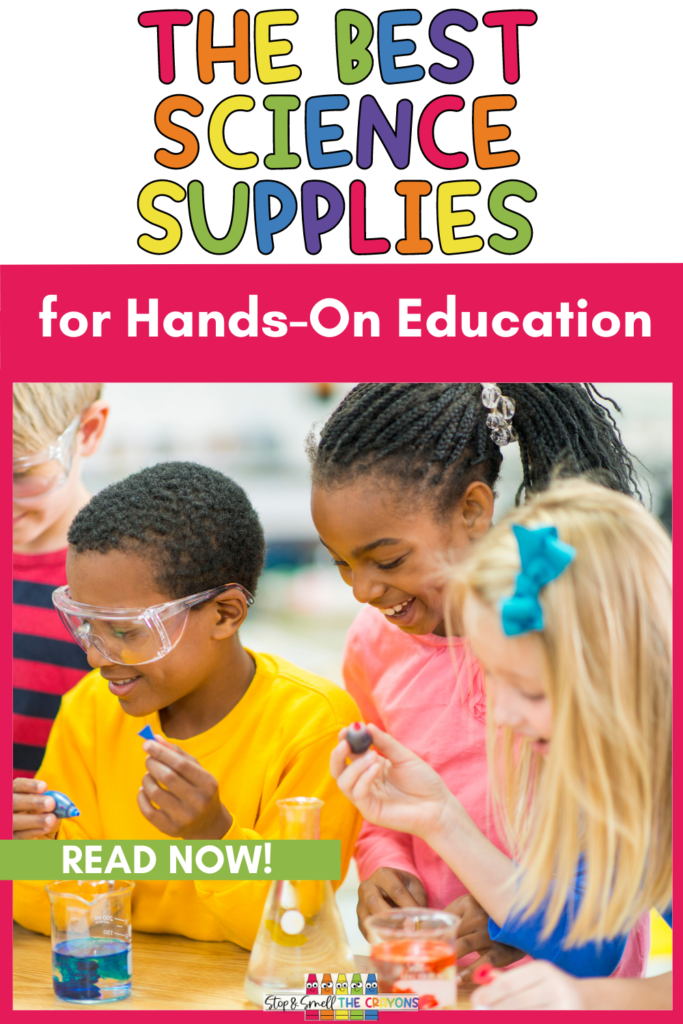It’s finally the day! You have written out the directions and prepped for the experiment your kiddos will complete in class. But then disaster strikes when you realize you need one last supply so the experiment does not flop. You scramble to find it only to realize that you don’t have the needed science supply anywhere. Through many years of teaching science, I have learned to keep certain supplies on hand at all times to avoid those panicked moments. I love exploring and experimenting with my little scientists, but it can also be chaotic if you don’t have what you need! Today, I am sharing my list of science supplies to always have on hand for those hands-on learning moments in science, so you’ll always be prepared!
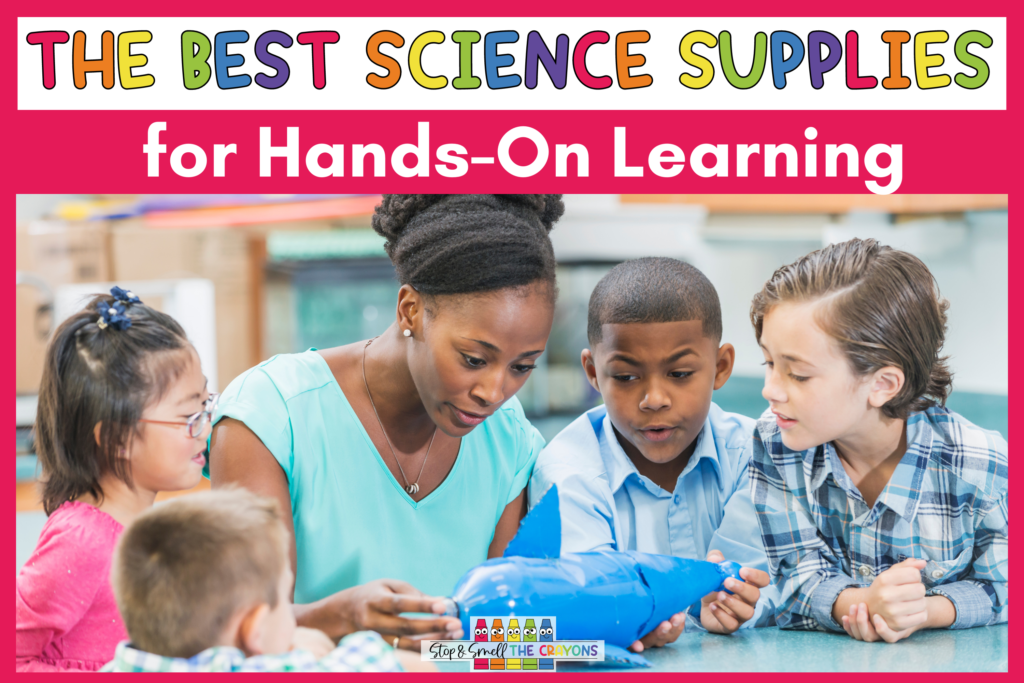
Why Should I Focus on Hands-On Learning for Science?
When students get to roll up their sleeves and dive into experiments, it sparks their interest like nothing else. It’s magical to witness because they become more engaged, curious and can really grasp those scientific concepts. Plus, when they actively participate and see the results, it sticks in their minds more than just reading about it.
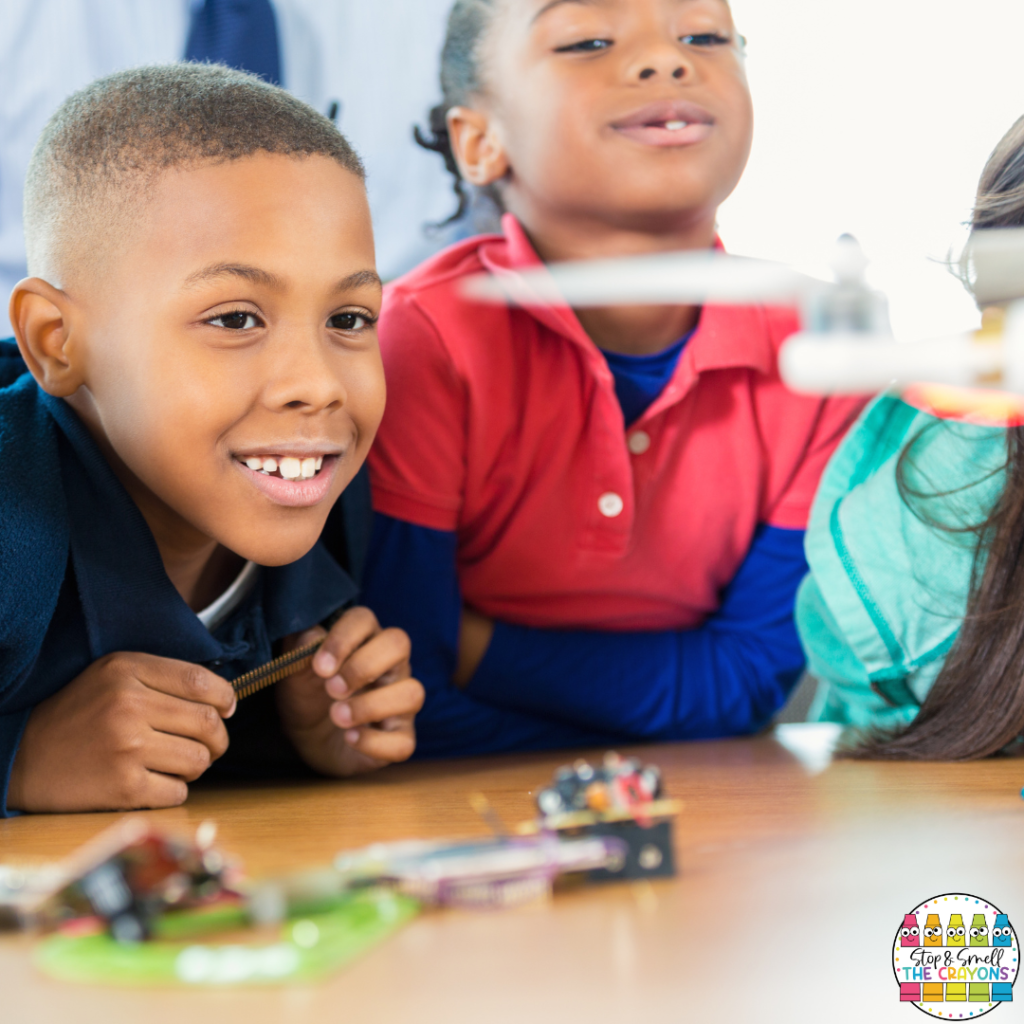
Hands-on learning hones their critical thinking skills as they tackle challenges during experiments and develop realistic solutions. I always tell my scientists not to worry about mistakes – they’re all part of the learning process. When kids see that it’s okay to make mistakes, they develop this fantastic “I can do it” attitude.
When they work with their classmates on experiments, it’s teamwork time! Collaborating brings out their social skills and helps them communicate better and learn to respect others’ ideas. Plus, they get prepared for life outside the classroom. Science is everywhere, and hands-on learning shows them how it applies to everyday things. It’s not just about memorizing facts; it’s about experiencing the thrill of discovery.
Essential Science Supplies
Including experiments in your lessons is a great way to reach many different learning styles. And. . . it is the basis of what science is all about. Making observations, testing variables and learning through experience is why science is so appealing to students of all ages. So keep adding those hands-on learning opportunities. And don’t worry, not all science experiments and labs involve crazy, hard-to-find materials.
Where Can I Find These Science Supplies?
Finding these supplies is a piece of cake! You can find most of these items at your local stores, like magnifying glasses, paperclips, and balloons – they’re practically everywhere!
If you prefer to shop from the comfort of your home, no worries! Just hop online, and voilà, a whole world of science supplies is at your fingertips. I have linked the supplies that I shared today above! From plastic bottles to bean seeds, it’s all just a click away!
Plus, many of these supplies are affordable, so you won’t break the bank to create your very own science lab. And. . . if you’re in a school community that is able, you could also ask for donations.
Force and Motion Science Supplies
In my resource, Grade 3 Science Forces Causing Movement, students explore magnetism, static electricity, friction, and buoyancy through several experiments. Below are four of the main science supplies needed!

Magnets
First up, we’ve got magnets. They let you experiment with attraction and repulsion. You can discover how they interact with different items and create magnetic fields.
There are many different types of magnets that you can use depending on what you will be doing and the age of your students.
Paperclips
Science supplies do not have to be big, fancy, or expensive! Paperclips can do all sorts of experiments. You can use them to make simple circuits, explore magnetic magic, or test buoyancy and surface tension. The best part? They’re super affordable and easy to find, so you’ll always have science fun!
Balloons
Get ready for some balloon bashin’! Balloons are perfect for learning about air pressure and volume. Blow them up, let the air out, and watch how they react. Balloons can also show you some “electric” moves through simple rubbing tricks. Say hello to static electricity! And. . . don’t forget about using air as a force. Balloons are perfect for this and much easier to control than the wind.
Plastic Bottles
Get your science goggles on because plastic bottles are turning into mini-labs! Fill them up, empty them out – you can do all kinds of experiments with them. Check out water density, try some chemical reactions, or even make groovy lava lamps. You can even watch a mini tornado take shape!
Science Supplies to Build Structures
Students learn about materials in my Objects, Materials, and Structures for Grade 1 and Simple Machines for Grade 2 resources. They explore how these materials can be combined to make a working stable mechanism or structure. Below are some science supplies to have on hand for when your scientists are building!
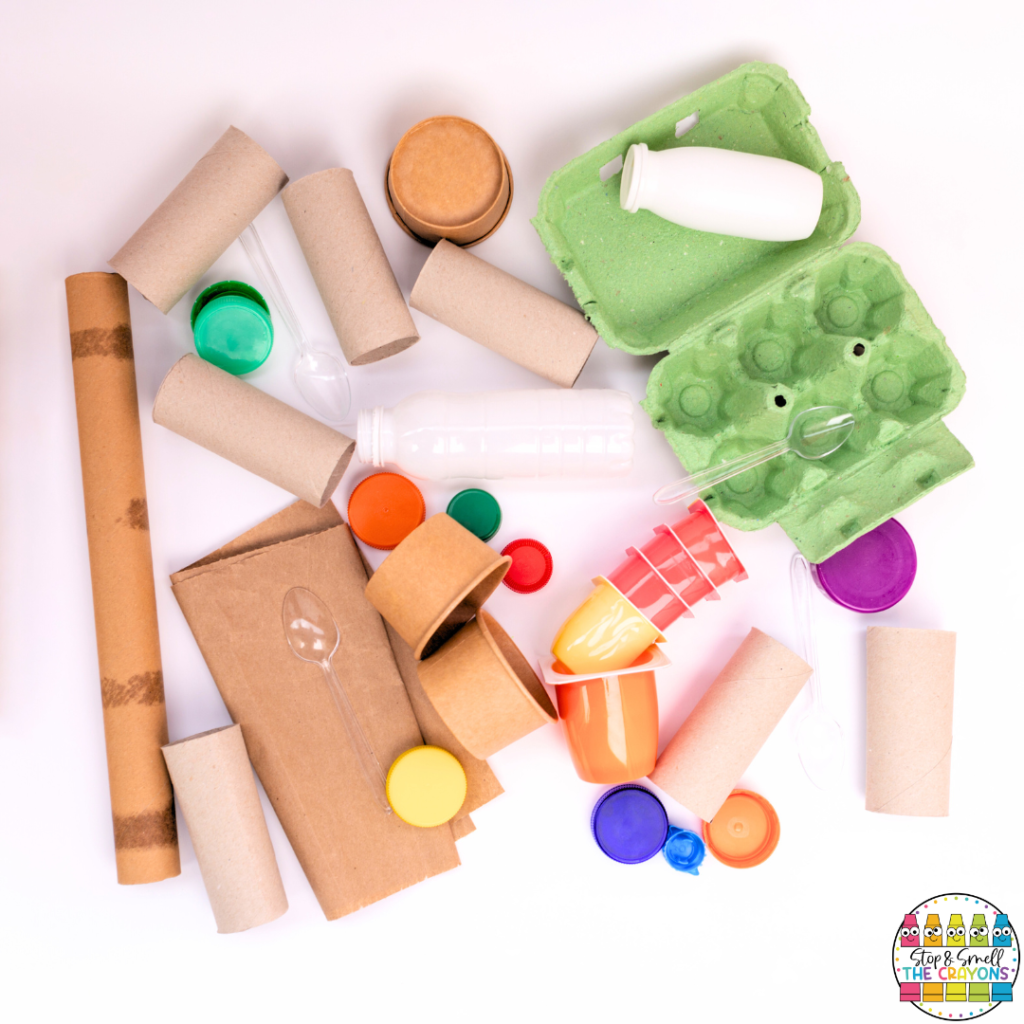
Paper Towels or Toilet Paper Tubes
Say hello to these cardboard wonders! They’re not just for throwing away; they’re for science adventures! Use them to build ramps, test stability, and explore gravity and motion. How about even trying them in a plant-growing experiment? Recycle, learn, and have a blast all at once!
Paper Plates
Paper plates are perfect for playing around with balance and stability. Load them up, shift things around, and see what happens. You can even use them for building models or engineer-like creations.
Paper Cups
Paper cups are one of the best science supplies to always have. They can be used to hold different types of solids or liquids. They are fantastic for exploring sound and vibrations. Use them to build different structures. Plus, they’re easy to throw away at the end.
Growth and Changes in Plants Science Supplies
In Grade 3 Science Growth and Changes in Plants, young scientists will plant a seed and watch the plant grow. They will measure, filter, and observe changes in the plant as it grows! Below are some science supplies that are helpful for this or similar experiments!
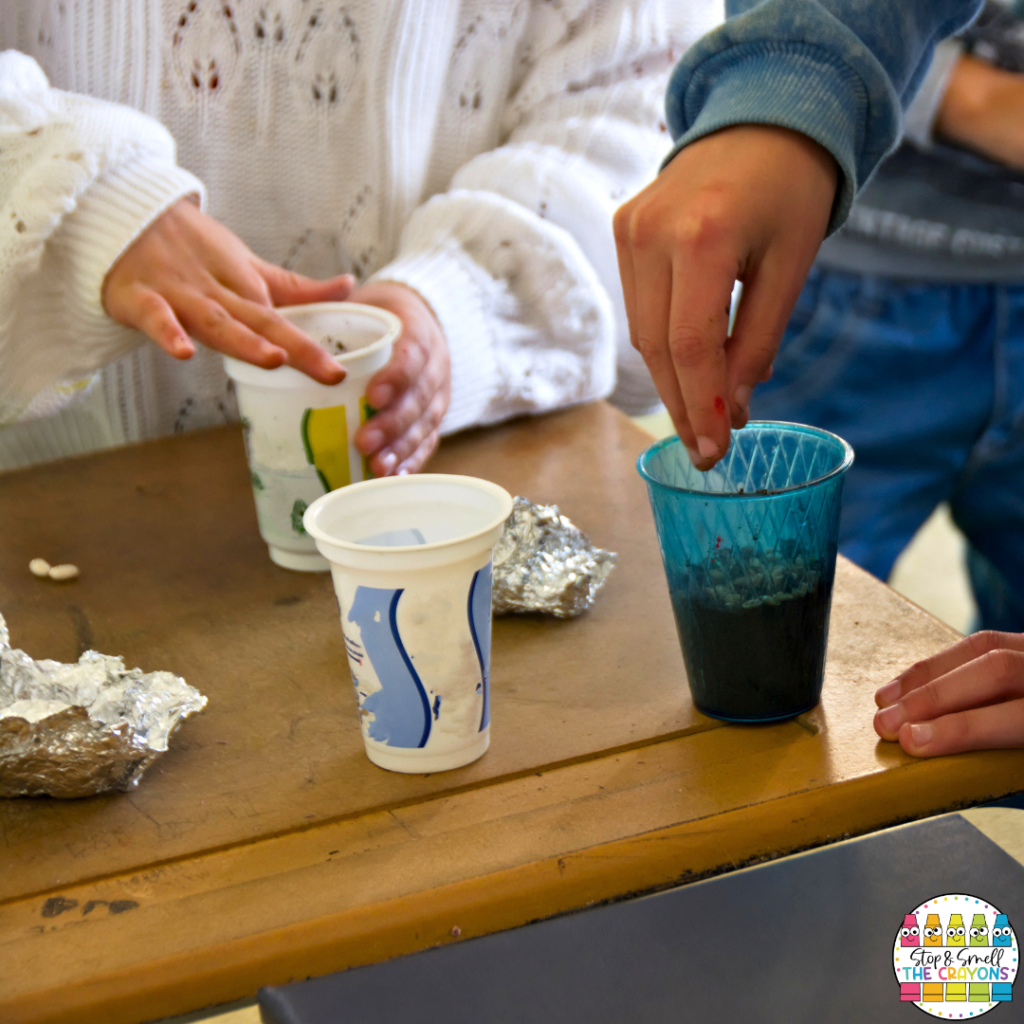
Bean Seeds
Bean seeds are here to show you the magic of plant growth. Watch them sprout, grow roots, and turn into tiny plants. Many seeds come in one pack, giving you more for your buck!
These dried beans also make great weights or counterbalances for other types of experiments and labs.
Magnifying Glasses
When kids use magnifying glasses, they can get up close and personal! From insects to leaves and all in between, they will discover tiny details they’ve never noticed before.
Rulers
Measuring tools, such as rulers, help our scientists to gather precise data. It’s all about being exact and paying attention to the little details. The sky’s the limit, from length and volume to all sorts of cool calculations!
I love the plastic rulers that you can see through. This helps young students make more precise measurements because they can line up the item being measured just so.
Coffee Filters
Last but not least, we’ve got coffee filters – the secret science agents of separation! Try some chromatography and see how colors break apart into different sections.
Coffee filters are also a very inexpensive way to separate materials or provide students with their own supplies.
Put Those Science Supplies to Use
Gathering all the supplies – not so fun. Watching your students dive into science, explore and learn about the world around them through hands-on learning – that’s fun! Looking for a science curriculum that is filled with hands-on learning? Need activities to supplement the curriculum you were provided? Want to have everything you need for science right at your fingertips? Check out the following grade-level bundles and watch as your students fall in love with science!
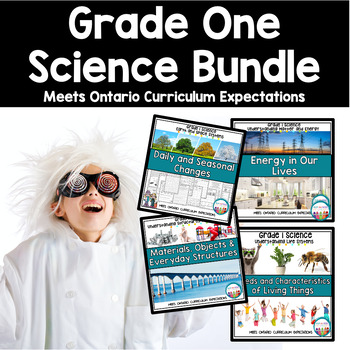
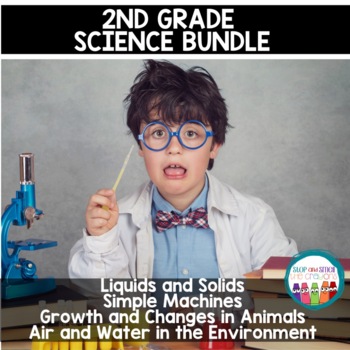
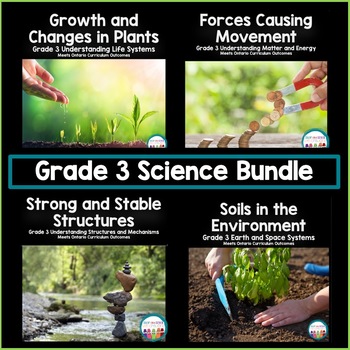
Time to Use These Science Supplies to Explore, Experiment, and Excel!
Hands-on learning is a ticket to a new world of excitement and discovery for our young scientists. With the science supplies we’ve talked about – from cool magnets to versatile paper plates – combined with incredible online resources, the learning experience becomes an absolute blast! We’re paving the way for future scientists, innovators, and explorers – and it all starts right here with these easy-to-find science supplies.
Save for Later!
Remember to save this post to your favorite Science Pinterest board when it’s time to stock up on these well-used science supplies!
